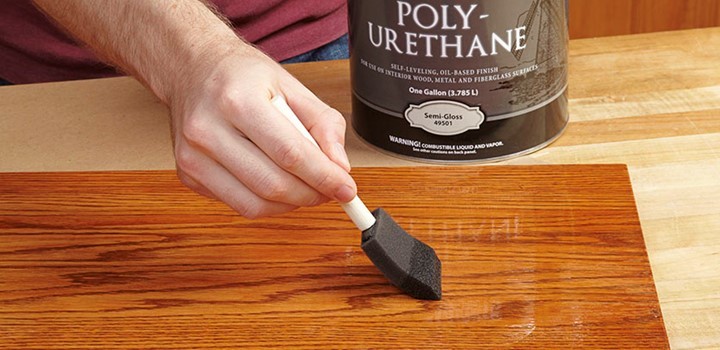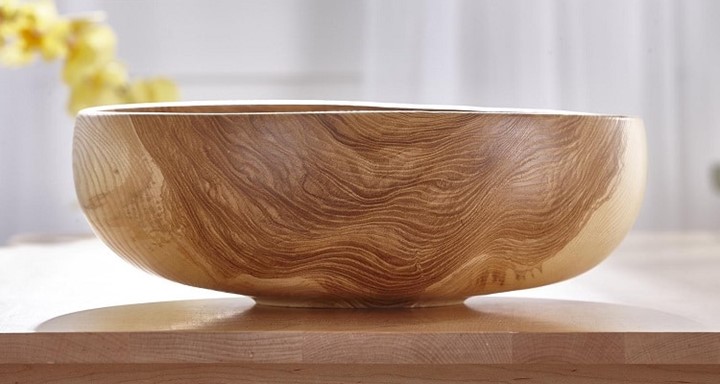Polyurethane Over Tung Oil: Is it Even Possible?
Polyurethane is a toxic polymer. But many people praise polyurethane for its natural beauty enhancing characteristics. It leaves questions like whether polyurethane is usable or not.
So, is putting polyurethane over tung oil even possible?
Yes, it is possible to put polyurethane over tung oil. Once the tung oil has dried up, you can easily apply polyurethane over it. It is possible to use polyurethane over other finishes as well. Polyurethane coating makes the wood more natural-looking.
Not sure if you understood the topic? Well, you’re in the right place! We wrote an in-depth guide on the whole subject and even detailed the process of application.
So, in order to avoid spending any more time let’s dive into the details!
What's On the Page
Can You Use Polyurethane Over Tung Oil?
Polyurethane is a widely used polymer. The most common use is being part of the thermal insulation system of major appliances. But using polyurethane varnish over wood is a common trend as well.
Tung oil, on the other hand, is a drying oil made from the nuts found in the tung tree. It is used as a wood finisher. A coat of tung oil alone is enough to protect and enhance the beauty of woodwork. Tung oil is quite famous for its easy application.
Now coming down to the main question of whether you can put polyurethane over tung oil or not. Simply put, yes, you can. But the tung oil must be dried first.
Experts believe putting Polyurethane over tung oil can even increase the durability of the wood.
How to Use Polyurethane Over Tung Oil?

The wood’s natural beauty is enhanced with a coating of Polyurethane, which also protects it from becoming brittle. The best part is that you can accomplish it with a few household items.
Before we begin, we must ensure that the tung oil is dried. Using protective gear such as gloves, mask, and protective eyewear are also highly advised.
So, without wasting any more time, let’s get into the steps of putting polyurethane:
Step 1: Applying Paint
First, we have to take a paintbrush and dip it into a paint stripper. Then we have to apply a thick coat of paint stripper on the wood. The paint will need 15-20 minutes to dry.
Step 2: Removing the Original Finish
Next, to remove the original finish on the wood, we’ll need to use a paint scraper. The scrapper must be held away from the body.
Pulling the scrapper in long strips will make the job easier.
Step 3: Removing Chemical Residue
Now, we must remove the chemical residue from the wood. For this, we have to soak a sponge in a mixture of warm water and dishwashing soap.
Then we have to wipe the wood with the sponge.
Step 4: Removing Traces of Strain
Then we have to remove all the remaining traces of the stain. Using a piece of grit sandpaper to smooth out the surface will suffice.
Using the grit sandpaper, all remaining traces of stain and coat have to be removed.
Step 5: Wiping with Tung Oil
Now that we’re left with the bare wood, we have to wipe it with tung oil. Excessive oil needs to be removed. The whole surface has to be covered.
Step 6: Applying Polyurethane
Finally, we have to dip a fine-grit scrub sponge into polyurethane. The wood has to be covered in a light layer and then be left to dry overnight.
Applying two or three coats of polyurethane is recommended.
Benefits of Using Polyurethane Over Tung Oil
By now we already know how to apply polyurethane over tung oil. Now, let’s discuss a bit about the benefits of using polyurethane over tung oil.
Gives a Natural Look
Many people prefer the natural appearance of wood. For them, a coat of polyurethane is perfect. Because a coat of polyurethane makes the wood look more natural.
Retains Moisture
The benefits of Polyurethane are not just for looks. Polyurethane helps the wood retain its moisture. This keeps the wood from becoming brittle and damaged.
Will There Be a Problem Using Polyurethane Over Tung Oil?
There are no side effects of using polyurethane over tung oil. Proper usage of both of the ingredients will not harm your product in any way. But if the oil is not properly dried, the polyurethane will not topcoat the wood.
The process can also cause damage if the oil is not of the right kind. Anything over the iodine value of 115 is good to use.
Even though Polyurethane is not harmful to wood, it is toxic for animals. Lack of proper safety protocols can be hazardous for your health.
Using Polyurethane Over Other Oils
Does polyurethane work only on tung oil? Certainly not. Other dried oils can also take a coat of polyurethane over them. Here are 4 of our favorites.
Polyurethane Over Teak Oil
Teak oil is usually made from tung oil or linseed oil mixed with extra additives. Applying teak oil gives the wood a warm and rich look. It also slows down the natural greying process of tweaks.
Only water-based Polyurethane can be used over teak oil. The teak oil must also be dried for 12-24 hours first.
Polyurethane Over Danish Oil
Danish oil is very versatile. It is water-resistant and food safe. This makes it a popular choice for food utensils and kitchen bowls.
Danish oil can also be coated with polyurethane. The coat will adhere as long as the Danish oil is fully cured. Using water-based polyurethane is recommended.
Polyurethane Over Enamel Paint
Enamel paints are really useful. They are very long-lasting. They also give the wood surface a durable finish and a hard glossy finish.
Polyurethane can be applied over enamel. But the enamel paint must be scuffed first. Water-based polyurethane on oil-based enamels must be avoided.
Polyurethane Over Vinyl Lettering
Vinyl is made of plastic, cloth, ceramic, or paper substrate. They are printed on surfaces using heat or water.
Water-based polyurethane can be used over Vinyl Lettering. Other kinds of polyurethane might yellow the oil.
FAQs
Are there any alternatives to Polyurethane?
Yes, there are many other polymers used for coating. Lacquer, Linseed Oil, etc are some of the natural alternatives.
Is Polyurethane safe?
Yes, for woodwork polyurethane is safe. But fumes created by polyurethane can be harmful to animals.
Conclusion
To sum up, is polyurethane over tung oil possible? It is very much possible. But proper safety and usage must be maintained for the best result.
Anyone who loves the natural look of the wood but is afraid of leaving it vulnerable can use a coat of polyurethane. Polyurethane gives wood its natural shine and protects it.
Until next time!

Robert Larry is a woodworking enthusiast, carpenter, creative wood art designer, and spokesperson. He has a passion for crafting unique and functional pieces from wood, and over the years, He has honed his skills to develop a distinctive style that blends traditional carpentry techniques with a modern, artistic touch.
In addition to his work as a carpenter, He is also a writer, sharing his knowledge and experiences through articles and blog posts on the craft of woodworking. With a keen eye for detail and a deep appreciation for the natural beauty of wood, He creates pieces that are not only functional but also beautiful works of art.

![How To Protect Cedar Wood For Outdoors? [3 Ways to Follow]](https://carpentinglab.com/wp-content/uploads/2021/12/How-to-Protect-outdoor-Cedar-Wood.jpg)


![How To Keep Painted Cabinets From Chipping?[3 Simple Methods]](https://carpentinglab.com/wp-content/uploads/2022/04/How-To-Keep-Painted-Cabinets-From-Chipping.jpg)
![How to Get Varnish off Your Hands? [Answered Elaborately]](https://carpentinglab.com/wp-content/uploads/2022/04/How-to-Get-Varnish-off-Your-Hands.jpg)

